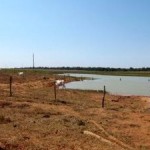 London, U.K. – Forest Bonds could be a key to scaling up finance to conserve the world’s tropical forests, according to WWF, the Global Canopy Programme (GCP) and the Climate Bonds Initiative (CBI). The organizations are calling on governments to take action to close the gap between current financial commitments and the resources needed to protect the world’s forests.
London, U.K. – Forest Bonds could be a key to scaling up finance to conserve the world’s tropical forests, according to WWF, the Global Canopy Programme (GCP) and the Climate Bonds Initiative (CBI). The organizations are calling on governments to take action to close the gap between current financial commitments and the resources needed to protect the world’s forests.
Upcoming United Nations climate change talks, set to get underway in Panama in early October and South Africa in December, provide an opportunity to focus on innovative options for financing forest conservation. To end forest loss, forest countries need support from industrialized countries. While public financing is essential, other sources of innovative financing, such as credit support for forest bonds, could be a way to leverage private sector finance so that the public sector is not alone in efforts to scale up forest finance, according to the groups.
“The alarming rate of forest loss around the globe is releasing billions of tonnes of CO2 and destroying irreplaceable biodiversity. The world needs to increase forest finance by tens of billions of dollars in the current decade just to halve this forest loss,” said Don Kanak, Advisor to WWF?s Forest and Climate Initiative, who is also Chairman of Prudential Corporation Asia.
“Tropical forests are critical natural capital that provide ecosystem goods and services that underpin the world’s wealth and human wellbeing, supporting climate, water, energy, food, health and livelihood securities at local to global scales,” said Andrew Mitchell, Executive Director of Global Canopy Programme. “The responsibility to end forest loss and protect these services has to be shared among governments and private sector from industrialized and forested countries. With carbon market negotiations proceeding slowly, forest bonds offer a way to compliment the public funds available by leveraging large-scale private-sector finance to help safeguard vital ecological infrastructure.”
Bonds are a familiar financing mechanism in sectors such as health and energy, and are receiving increased interest as a mechanism to finance mitigation of and adaptation to climate change, including for reducing emissions from deforestation and forest degradation, and conserving, sustainably managing and enhancing forest carbon stocks (collectively referred to as REDD+).
“Forest bonds are a tool for countries, multi-lateral development banks, and private financial institutions to tap into the international bond market that is worth nearly 100 trillion USD,” said Sean Kidney, Chair of the Climate Bonds Initiative, an investor-focused NGO.
Kidney added “Time is short. While REDD+ is an opportunity, investor demand is weak. We think the most fertile ground is to use regional forest retention programs that rely on diversified income streams to support a ‘forest’ bond. We can use such programs to create jobs and give people better opportunities than felling trees.”
Borrowing allows significant up-front investment to be made in developing the financially viable projects that will enable forest retention. According to WWF, GCP and CBI, under the right conditions, forest bonds could become a useful large-scale financing mechanism in the effort to reduce global forest loss.
Based on the outcomes of a workshop that brought together experts on tropical forest policy and finance, a report titled “Unlocking Forest Bonds” was launched that shows how to overcome challenges associated with using bonds for the conservation and sustainable use of forests. The workshop was co-hosted by WWF, GCP and CBI, and supported by Goldman Sachs and Fondation 1796 (Lombard Odier).
Key Findings:
REDD+ and More – To make forest bonds feasible on a large-scale, a range of revenue streams should be used to pay the bonds back. Along with REDD+, payments for watershed services, environmental taxes, sustainable timber revenues and many other revenue generating mechanisms should be explored as collateral against a forest bond.
Making Forest Bonds Legitimate – To succeed, forest bonds must work for all stakeholders, including private sector investors, international policy-makers, and governments and citizens of forested countries. This means that the risks and rewards must be appropriately balanced between these groups. It also means that there must be real environmental and social benefits associated with making such an investment.
Role of Public Sector – Forest country governments can themselves issue bonds, and this may be a good option in some cases. For example, Brazil has a strong economy and an international mandate to reduce forest loss in the Amazon. Donor countries can support forest country governments, and other institutions wanting to issue a forest bond, by using their available public funds strategically, to reduce the risk associated with its payback.
About WWF
WWF is one of the world’s largest and most experienced independent conservation organizations, with over 5 million supporters and a global network active in more than 100 countries. WWF’s mission is to stop the degradation of the planet’s natural environment and to build a future in which humans live in harmony with nature, by conserving the world’s biological diversity, ensuring that the use of renewable natural resources is sustainable, and promoting the reduction of pollution and wasteful consumption. For more information, visit www.panda.org.
About Global Canopy Programme
The Global Canopy Programme is a small and dynamic tropical forest think-tank based in Oxford, acting through global networks of experts in science, policy, business, finance and forest communities. They gather their tropical forest intelligence to spark insight, convene research and design projects that can help leverage future large-scale systemic change, demonstrating the value of forests as natural capital and communicating it to the world. Their mission is to catalyze a shift across the global economy and society in recognizing tropical forests as natural capital essential to human wellbeing and the sustainability of Earth’s ecosystem. For more information, visit www.globalcanopy.org.
About Climate Bonds Initiative
The Climate Bonds Initiative is an international investor-focused not-for-profit, promoting large-scale investment in the low-carbon economy. The Initiatives works on developing large-scale investable propositions and facilitating the market. For more information, visit www.climatebonds.net.
Source: WWF.














